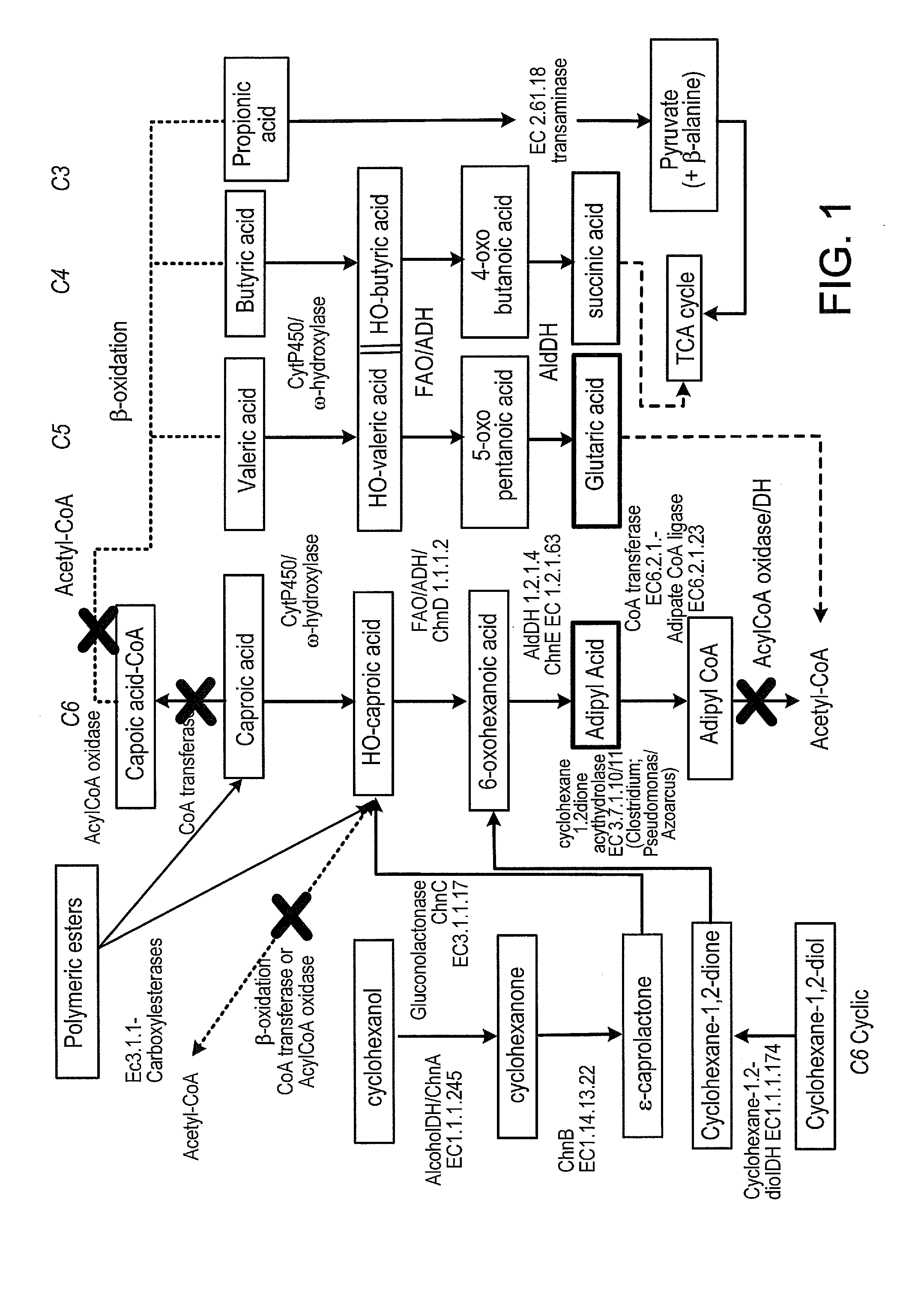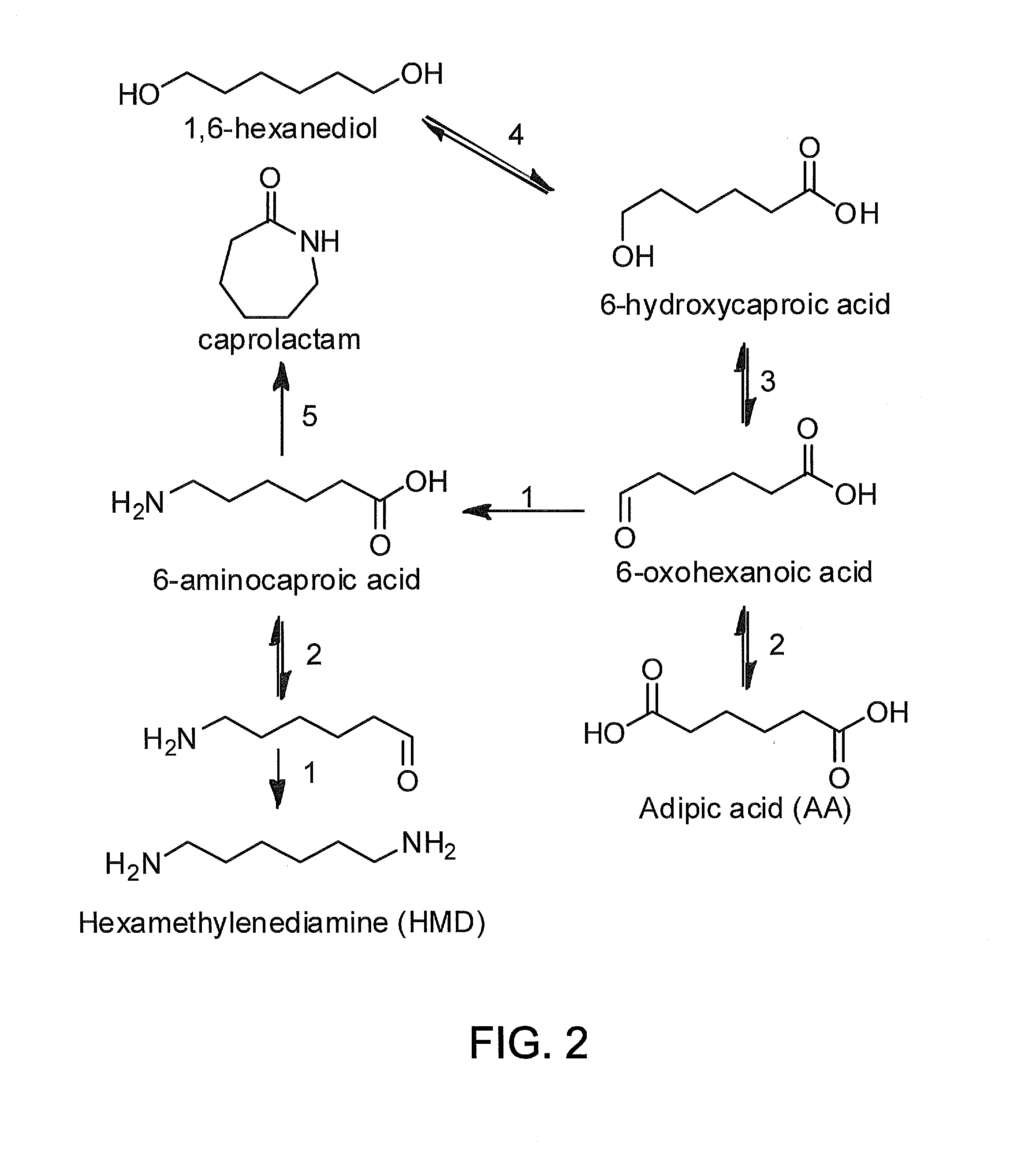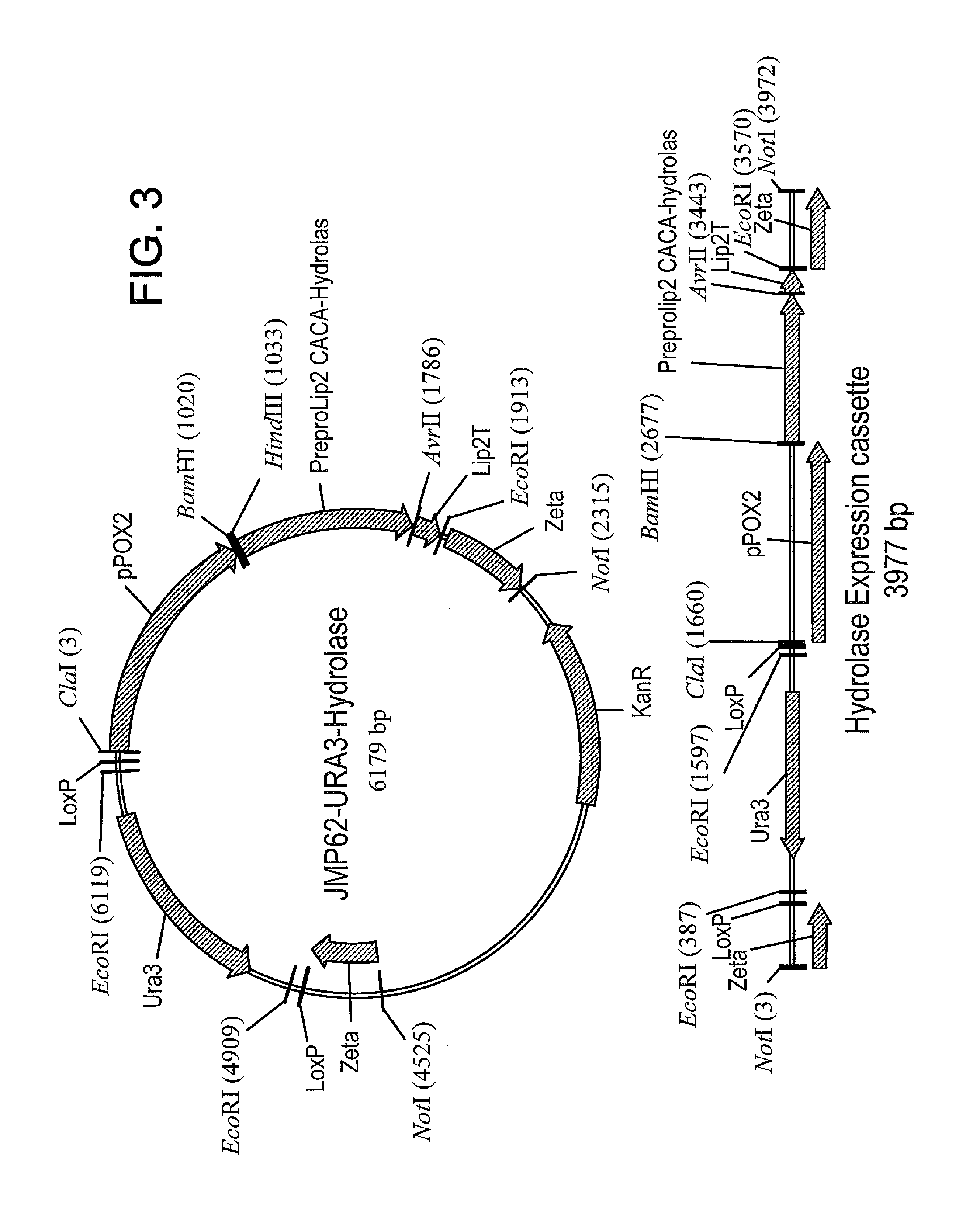Methods of producing carboxylic acids
a technology of carboxylic acid and carboxylic acid, which is applied in the preparation of carboxylic compounds, biological water/sewage treatment, chemical production, etc., can solve the problems of low yield of carbon from these streams, large portion of carbon not utilized, and no biological process for the treatment of these waste streams or the utilization of carbon in these waste streams has been developed, so as to improve the properties and composition of mixed organic waste streams, economic and sustainable
- Summary
- Abstract
- Description
- Claims
- Application Information
AI Technical Summary
Benefits of technology
Problems solved by technology
Method used
Image
Examples
example 1
Hydrolysis of Oligomeric Esters in NVR, COP acid & Water Wash
[0241]Commercial lipases (free and immobilized) and esterases from different classes based on the topography of their binding sites were selected to screen for hydrolysis of oligomeric esters in NVR and COP acid (Table 1 and 2). Based on the results of this screen, the Lipase Engineering database (LED) (Widmann et al., BMC Genomics 2010, 11:123) and other bioinformatics resources were used to identify additional candidate enzymes to screen for the hydrolysis of oligomeric esters, and, in particular, enzymes that are thermostable or active at low pH. People skilled in the art will understand that it is also possible to change the pH optimum and stability of enzymes with the desired activity or to alter the substrate specificity of enzymes with the desired pH and stability properties or both, by enzyme engineering using rational design or directed evolution techniques.
[0242]Screening methods for hydrolysis of oligomeric este...
example 2
Selection of Host Cells that Can Catabolize the Major C4 and C5 Components in NVR
[0258]Removing C4 and C5 monoacids (butyric acid and valeric acid) and hydroxyacids from NVR, either by converting it to the corresponding diacids or by utilizing it for growth via n-oxidation is important to produce either a C4-C6 diacid mixture or adipic acid from NVR. In order to produce a diacid mixture from NVR, accumulation of the diacids from the mono-acids via ω-oxidation and a low consumption rate of the diacids compared to the monoacids are desirable. This example demonstrates selection of a host cell microorganism that can catabolize the major C4 and C5 components of mixed organic waste streams.
[0259]A mixed culture of Yarrowia lipolytica strains (72 total strains) were used as a starter culture for chemo-stat cultivation to select strains for their ability to efficiently utilize butyric acid and valeric acid. This was done by feeding the mono-acids as sole source of carbon during the chemo-s...
example 3
Chemo-Stat Fermentation with Cell Retention Using NVR as Carbon and Energy Source for Yarrowia lipolytica
[0270]A chemo-stat fermentation with cell retention was set up, as shown in FIG. 16, with a 1 L jacketed glass fermenter and a 225 [cm2] polyethersulfone 0.2 [μm] hollow fibre membrane. The experimental set-up provided for a NVR Feed, Nutrient Feed and Base Feed (12 [%] (v / v) NH3(aq)) that was filter sterilized into the fermenter via peristaltic pumps. Furtheimore, a peristaltic pump provided the necessary cross-flow retentate flow rate to the hollow fibre membrane, a peristaltic pump allowed withdrawal of permeate and a peristaltic pump allowed for a biomass bleed from the fermenter.
[0271]The chemo-stat's control philosophy entailed manual feed ratio control of the NVR Feed to Nutrient Feed rates, pH control via the Base Feed, temperature control via cooling water supply to the fermenter's jacket, fixed aeration & agitation rates via the respective feedback loops, fixed cross-f...
PUM
| Property | Measurement | Unit |
|---|---|---|
| pH | aaaaa | aaaaa |
| pH | aaaaa | aaaaa |
| pH | aaaaa | aaaaa |
Abstract
Description
Claims
Application Information
 Login to View More
Login to View More - R&D
- Intellectual Property
- Life Sciences
- Materials
- Tech Scout
- Unparalleled Data Quality
- Higher Quality Content
- 60% Fewer Hallucinations
Browse by: Latest US Patents, China's latest patents, Technical Efficacy Thesaurus, Application Domain, Technology Topic, Popular Technical Reports.
© 2025 PatSnap. All rights reserved.Legal|Privacy policy|Modern Slavery Act Transparency Statement|Sitemap|About US| Contact US: help@patsnap.com



